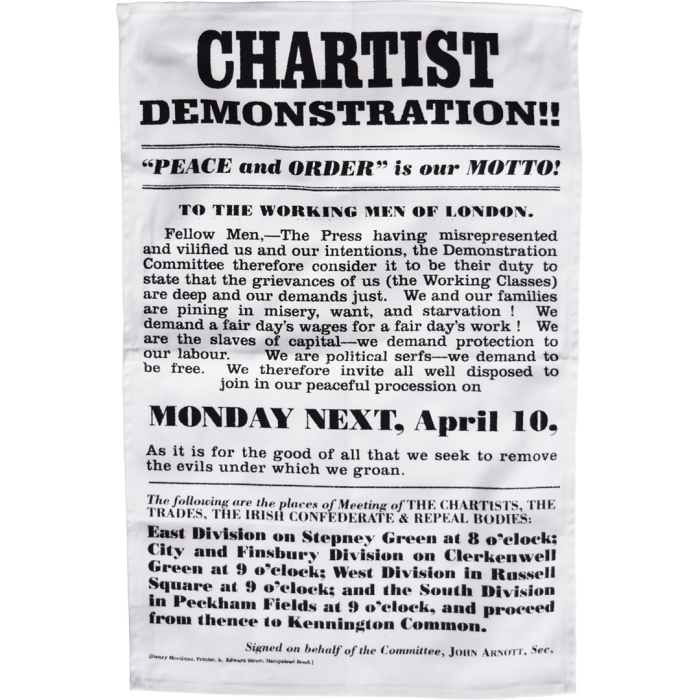We use cookies to make your shopping experience better. By using our website, you're agreeing to the collection of data as described in our Privacy Policy.
Chartist Demonstration tea towel
Before women got the vote, men had to get it. In 1832, the Reform Act gave voting rights to the property-owning men in Britain, but the poor remained excluded. Many people wanted to go one step further, demanding universal male suffrage. These demands emerged in 1838 in the form of Chartism, a working class-movement which got its name from the People’s Charter. In its six main aims, it called for more equality and transparency in the electoral system, and the first four of these goals were eventually achieved.
It wasn’t an easy battle though, despite mass support and petitions which received millions of signatures, their demands were consistently rejected by parliament. This political gift features a poster advertising a mass meeting organised by Chartist leaders to put pressure once again on parliament. It took place on Kennington Common in 1848, accumulating a crowd of 150,000. Although its demands were rejected again, its legacy wasn’t, with reforms finally coming at the end of the 19th century. Chartism? It’s got our vote.
We’ve got more on the Chartist’s fight for democracy in our blog post here!
